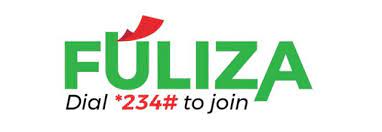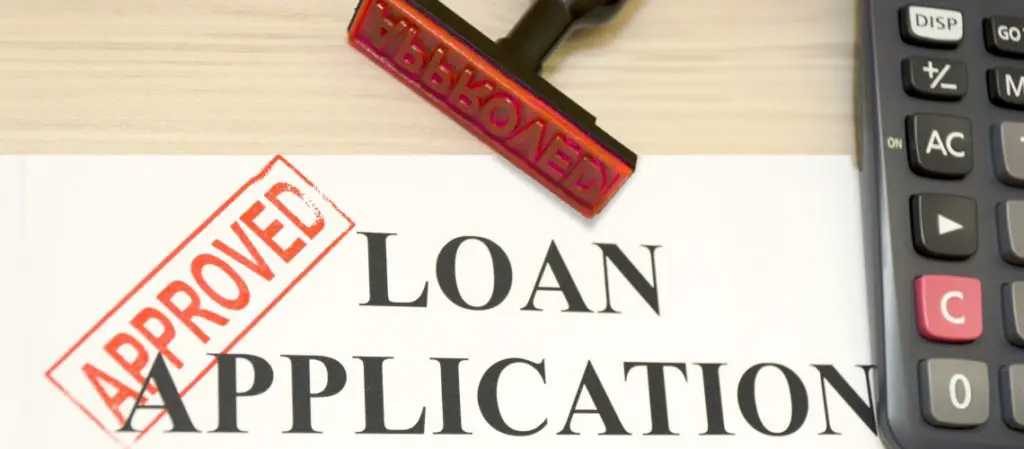Many people want to know their credit status to ensure they can access loans and other financial services. Fortunately, checking your CRB status is easy and can be done online or through a mobile app.
One of the most reliable platforms for checking your CRB status is Metropol. You can access their services through their website, mobile app, or by dialing *433#.
To register and check your CRB status with Metropol, you’ll need to pay Ksh.100 through PayBill Number 220388. Once you’ve paid, you’ll receive your credit report and certificate of clearance, which will show your CRB status.
Another option for checking your CRB status is to register with other CRB companies. Some credit providers may report adverse credit history to more than one CRB, so it’s a good idea to check your status with multiple companies.
Methods to Check CRB Status
If you are wondering how to check your CRB status in Kenya, there are several methods available. In this section, we will discuss the three most common methods: online, phone, and via email.
Online Method
One of the easiest and most convenient ways to check your CRB status is through the official websites or mobile apps of CRB companies such as Metropol, TransUnion, and CreditInfo. Here are the steps to follow:
- Visit the official website or download the mobile app of the CRB company of your choice. (Metropol, Transunion, Credit info)
- Register for an account if you don’t have one already.
- Fill in your personal details and answer security questions to verify your identity.
- Click on the “Check CRB status” or “Get credit report” button.
- Wait for your credit report to be generated and displayed on the screen.
- Download or print your credit report for future reference.
Phone Method
If you prefer to check your CRB status via phone, you can do so by calling the customer service hotline of the CRB company you want to check with. Here’s how:
- Find the customer service hotline number of the CRB company you want to check with.
- Dial the number and wait for the customer service representative to answer.
- Provide your personal details and answer security questions to verify your identity.
- Request for your credit report or CRB status.
- Wait for the customer service representative to generate and read out your credit report or CRB status.
- Take note of the details or ask the customer service representative to send you a copy via email.
Via Email
Another way to check your CRB status is through email. Here’s how:
- Compose a new email and address it to the customer service email of the CRB company you want to check with.
- In the subject line, write “Request for Credit Report” or “Check CRB Status”.
- In the body of the email, provide your personal details and answer security questions to verify your identity.
- Request for your credit report or CRB status.
- Wait for the customer service representative to generate and send you a copy of your credit report or CRB status via email.
In conclusion, checking your CRB status is an important step in managing your credit history and improving your credit score. By using any of the methods discussed in this section, you can easily access your credit report and stay informed about your credit status.
Understanding CRB Status
Before we dive into how to check your CRB status in Kenya, let’s first understand what it is. CRB stands for Credit Reference Bureau, which is a company that collects and maintains credit information on individuals and businesses.
The information collected includes your credit history, loan repayments, and any defaults or late payments.
The purpose of a CRB is to help lenders make informed decisions when it comes to lending money. By checking your CRB status, lenders can determine your creditworthiness and decide whether to approve or reject your loan application.
A good CRB status indicates that you are a responsible borrower who pays their debts on time, while a bad CRB status shows that you have a history of defaulting on loans.
In Kenya, there are three licensed CRBs: TransUnion, Metropol, and Creditinfo. Each CRB uses a different scoring system to rate your creditworthiness, but generally, the higher your score, the better your chances of getting approved for a loan.
It’s important to note that your CRB status can be affected by various factors, including missed payments, defaults, and even applying for too many loans within a short period.
Therefore, it’s essential to monitor your CRB status regularly to ensure that it accurately reflects your creditworthiness.
The Importance of CRB Status
If you are planning to apply for a loan or credit in Kenya, it is important to know your Credit Reference Bureau (CRB) status. Your CRB status is a record of your credit history, including any loans or credit facilities you have taken and how you have repaid them.
Lenders use this information to determine whether you are a high or low-risk borrower and whether they should approve your loan application.
Having a good CRB status is important because it can increase your chances of getting approved for a loan or credit facility. A positive CRB rating means that you consistently pay loans and debts on time, while a negative indicates that you may have defaulted paying them.
This information is used by lenders to determine your creditworthiness and the interest rate they will charge you.
Furthermore, knowing your CRB status can help you avoid being blacklisted by lenders. If you default on a loan or credit facility, it will negatively impact your CRB status, and lenders may refuse to extend credit to you in the future.
Interpreting CRB Status
Once you have checked your CRB status, you will need to interpret the information provided to understand your creditworthiness. Here are some things to keep in mind when interpreting your CRB status:
- Credit Score: This is a numerical representation of your creditworthiness. The higher your score, the more creditworthy you are considered to be. Scores above 700 are generally considered good, while scores below 500 are considered poor.
- Credit History: This section of your CRB report shows your credit history, including loans you have taken out and how you have repaid them. Lenders will look at this section to determine whether you are a responsible borrower.
- Outstanding Loans: This section shows any loans that you currently have outstanding. Lenders will look at this section to determine your debt-to-income ratio.
- Defaults: This section shows any defaults on loans that you have had in the past. Defaults can negatively impact your credit score and make it more difficult to obtain credit in the future.
- Judgments: This section shows any legal judgments against you, such as court orders to pay outstanding debts. Judgments can negatively impact your credit score and make it more difficult to obtain credit in the future.
It’s important to understand that your CRB status is just one factor that lenders will consider when determining whether to lend you money.
Other factors, such as your income and employment history, will also be taken into account. If you have a poor CRB status, it’s important to take steps to improve it, such as paying off outstanding debts and making all future payments on time.
How to Improve CRB Status
If you have a poor CRB status, it can be challenging to get loans or credit from financial institutions. However, you can improve your CRB status by taking the following steps:
- Pay off your debts: One of the primary reasons for a poor CRB status is outstanding debts. Therefore, it is essential to settle all your debts to improve your credit score. You can create a budget plan to help you manage your finances and pay off your debts systematically.
- Pay bills on time: Late payments can negatively affect your credit score. Therefore, ensure that you pay all your bills on time, including rent, utilities, and credit card bills.
- Limit credit applications: Applying for credit frequently can make you appear desperate for money, which can harm your credit score. Instead, only apply for credit when you genuinely need it.
- Monitor your credit report: Regularly checking your credit report can help you identify and correct any errors that may affect your credit score. You can request a free credit report once a year from any of the CRB companies.
- Use credit responsibly: Using credit responsibly, such as keeping your credit utilization low, can help improve your credit score over time.
Improving your CRB status takes time and effort, but it is possible. By following the above steps, you can gradually improve your credit score and increase your chances of getting approved for loans and credit.
Frequently Asked Questions
How can I check my CRB status on my phone for free?
Unfortunately, there is no free way to check your CRB status on your phone. However, some CRB agencies offer affordable SMS or USSD services that you can use to check your status.
What is gold status in CRB?
Gold status in CRB refers to a high credit score. This means that you have a good credit history and are less likely to default on loans. With a gold status, you are more likely to be approved for loans and other credit facilities.
How to check CRB status online for free
There is no free way to check your CRB status online. However, some CRB agencies offer affordable online services that you can use to check your status. You can visit their website or download their mobile app to check your status.
How do I know if I am blacklisted by CRB?
You can know if you are blacklisted by CRB by checking your credit report. If you have a negative credit history, such as unpaid loans or credit card bills, you are likely to be blacklisted by CRB. To check your credit report, you can visit any of the CRB agencies in Kenya.
How to check CRB status via SMS
To check your CRB status via SMS, you can send a text message to your preferred CRB agency. The message should include your full name and ID number. You will then receive a response with your CRB status and any other relevant information.
How to remove my name from CRB without paying?
To remove your name from CRB without paying, you need to clear all your outstanding debts and loans. Once you have cleared your debts, you can request your bank or financial institution to update your credit report. This will reflect positively on your credit score and improve your chances of being approved for loans and other credit facilities.
Final Thoughts
Checking your CRB status is an important step to take before applying for any loans or credit facilities. It helps you to understand your creditworthiness and whether you are likely to be approved for a loan or not. Here are some final thoughts to keep in mind:
- Always check your CRB status regularly to ensure that all the information is accurate and up-to-date. If you find any errors, contact the relevant CRB company to have them corrected.
- If you are blacklisted, don’t panic. You can still take steps to improve your credit score, such as paying off any outstanding debts and ensuring that you make all your payments on time.
- Be wary of scams that claim to be able to clear your CRB status for a fee. There is no legitimate way to do this, and you could end up losing money without any improvement to your credit score.
- Remember that your CRB status is just one factor that lenders consider when deciding whether to approve your loan application. Other factors, such as your income, employment history, and existing debts, are also important.
- Finally, be responsible with your credit and always make your payments on time. This will help to improve your credit score over time and make it easier for you to access credit facilities in the future.



